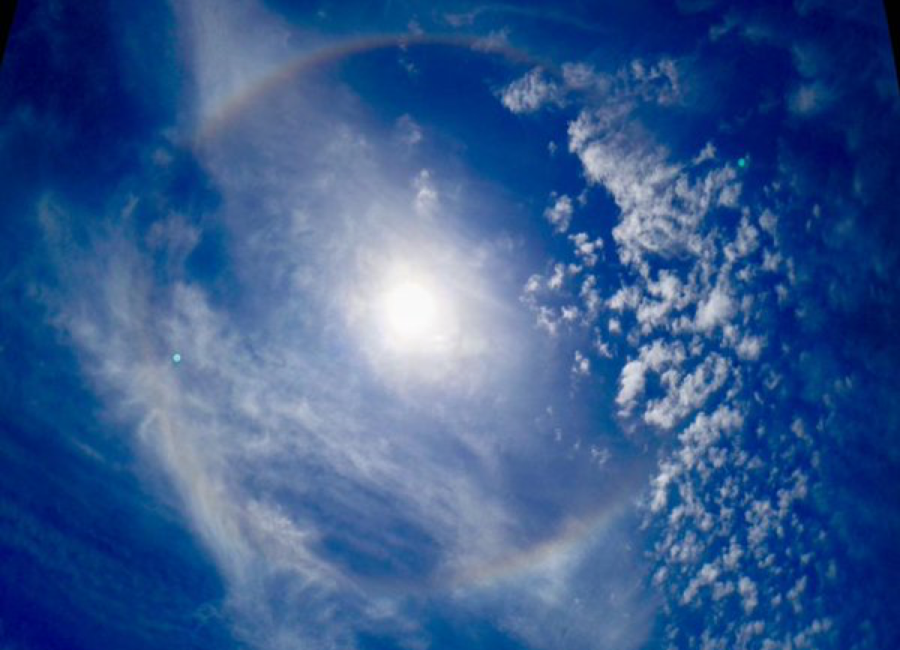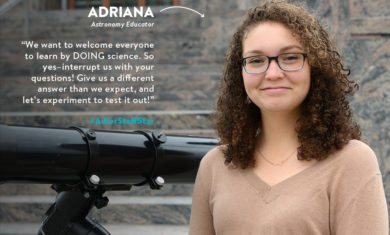What Are Gravitational Waves And How They Helped Us Discover The “Mass Gap” Black Hole
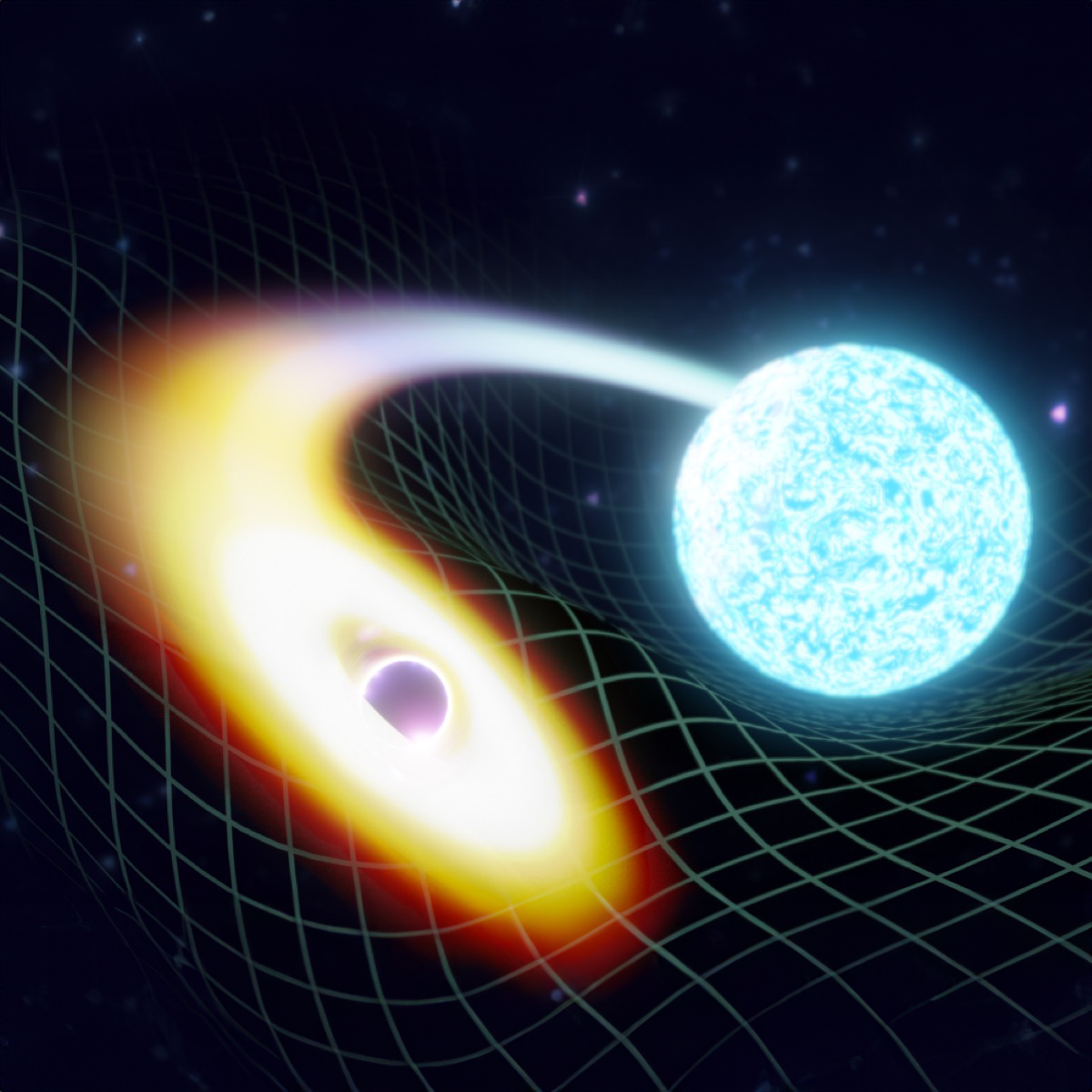
Header Image: Artistic rendition of a black hole merging with a neutron star. Image credit: LIGO-India/ Soheb Mandhai
Written by The Adler Planetarium’s Astronomer, Dr. Michael Zevin.
Humanity’s understanding of the universe has evolved in parallel with new methods of observing the cosmos. Our ancient ancestors tracked and cataloged the motion of heavenly bodies, and by the early 17th century, the invention of the telescope allowed us to observe dimmer, more distant objects. In the 19th century, we began relying on astronomical photography—which allows us to expose images of the universe for longer periods of time—and astronomical spectroscopy—which breaks apart light into its constituent colors.
By the 20th century, we could observe the universe in energies and colors of light that the human eye cannot see and we finally bypassed Earth’s atmosphere by sending telescopes into space. All of these advancements have improved our understanding of the cosmos, unveiling new mysteries in the process.
What you may not realize is that there is a commonality between all of these astronomical advances. They all rely on collecting a single form of information—electromagnetic radiation, which you may know better as “light.” For almost the entire history of astronomy, light has been the sole cosmic messenger we’ve used to glean information from the vast universe beyond our solar system.
However, it is still only one form of information, one sense that we can collect information with. What could we learn if we were able to collect information using other senses? Rather than just seeing the universe, what else would we discover if we could hear it or feel it?
Gravitational Waves
There are other messengers from the universe beyond just light. One of these messengers is called gravitational radiation or gravitational waves. This phenomenon was predicted by Albert Einstein over a century ago as a byproduct of his theory of general relativity. The theory of general relativity is our modern understanding of how gravity, space, and time operate in the universe. In a nutshell, it tells us that matter and energy curve the fabric of space. This curved space tells things like planets, stars, and galaxies how to move. If objects are accelerating through the malleable fabric of space, they create ripples in the fabric of space itself.
These gravitational waves travel at the speed of light and are completely invisible to a telescope, but provide information from the universe, completely independent from light! The direct detection of gravitational waves is analogous to hearing the sounds of the universe for the first time and can unveil unprecedented information about astrophysical objects that are notoriously difficult to study with light, such as black holes.
The Best Rulers Ever Built
If gravitational waves are invisible, how can we detect them? As gravitational waves pass through space, they cause space itself—and everything within it—to expand and contract. For example, when a gravitational wave passes through our planet, it causes the equator to stretch, and the distance between the poles to squeeze, ever so slightly—and vice versa.
However, spacetime is exceptionally “stiff” and even the strongest gravitational waves have an unbelievably minuscule effect. For example, a passing gravitational wave from the collision of two black holes might stretch and squeeze the Earth by about the width of a proton, which is about a thousand trillionth of a meter. In fact, these signals are so elusive that even Einstein himself thought that we would never be able to detect them and use them to study the cosmos.
To observe gravitational waves, we use high-powered lasers that act as an incredibly precise ruler. The LIGO–Virgo–KAGRA gravitational-wave network does this with four separate detectors around the world: the twin LIGO detectors in Washington and Louisiana, the Virgo detector in Italy, and the KAGRA detector in Japan.
These detectors are giant L-shaped devices with two arms that are each 2.5 miles long vacuum chambers. The laser is sent down the two arms, bounces off mirrors at the ends of the arms, and comes back to interact with the light that went down the other arm. Because of the wave-like nature of the light in the lasers, we can detect interference when the two light beams recombine if the arms have a slight difference in length from a passing gravitational wave.
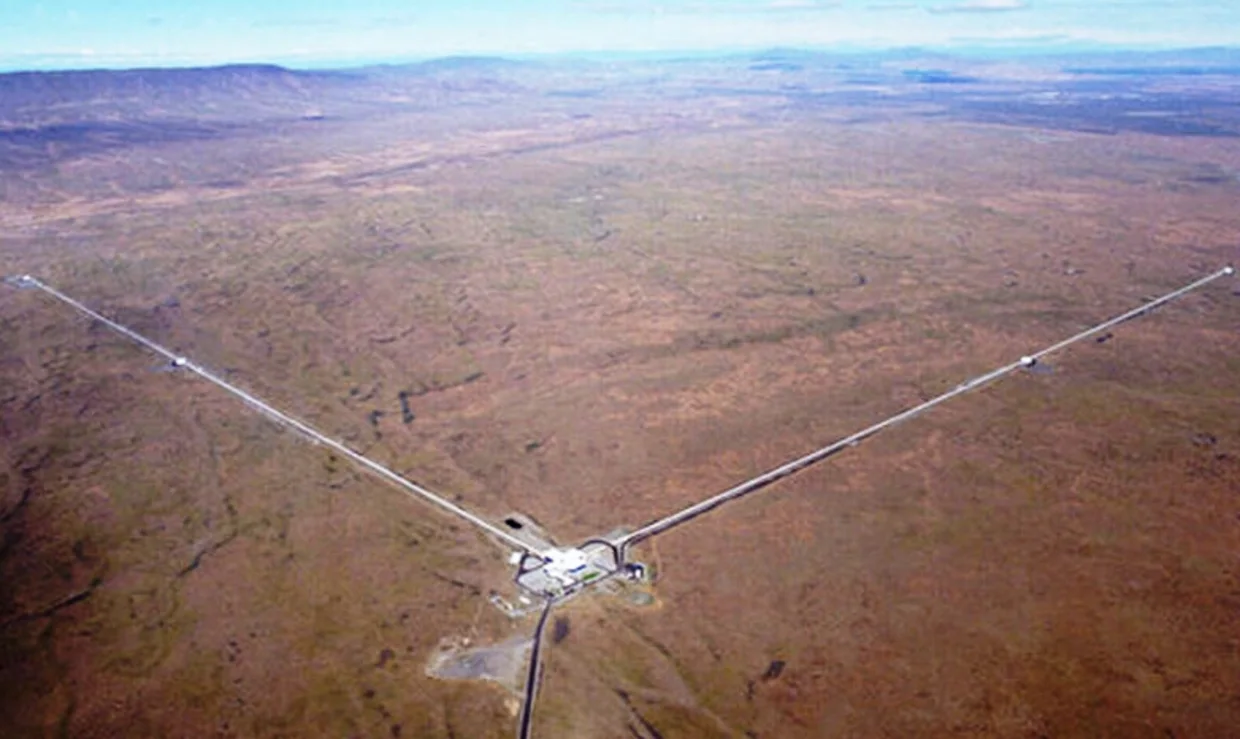
Sounds Of Spacetime
On September 14, 2015, almost exactly a century after Einstein predicted the existence of gravitational waves, a screaming loud signal was observed in the LIGO detectors. Based on how the arms of the LIGO detectors wiggled, we could tell a lot about the system that created the gravitational-wave signal: two black holes about a billion lightyears away, each about 30 times the mass of the Sun, spiraling towards one another and merging. This signal was one of the most monumental discoveries in modern physics, and was awarded the Nobel Prize in Physics in 2017. For the first time, we were able to hear the sounds of spacetime and use gravitational waves as a new sense to collect information from the universe!
Since this discovery, the field of gravitational-wave astronomy has exploded. The last full observing run of gravitational-wave detectors completed in 2020, and at that time nearly 100 confident gravitational-wave events were observed. These didn’t just come from merging black holes; the dense remnant cores of massive stars called neutron stars were also observed in gravitational waves.
In fact, one infamous system of two merging neutron stars was observed in both electromagnetic and gravitational radiation—a “multi-messenger” event! When two neutron stars merge, they not only emit gravitational waves, but also a burst of high-energy radiation called a gamma-ray burst and an explosion powered by radioactive decay called a kilonova. Kilonovas create a beautiful light show and are responsible for synthesizing most of the heavy elements on the periodic table (so you can thank them for generating the gold, silver, and platinum we have here on Earth).
Despite the groundbreaking gravitational-wave discoveries during the first half-decade of observations, the field of gravitational-wave astronomy is still in its nascent stages. The network of gravitational-wave detectors turned back on for another observing run in May 2023. Soon after, another new and exciting system was observed.
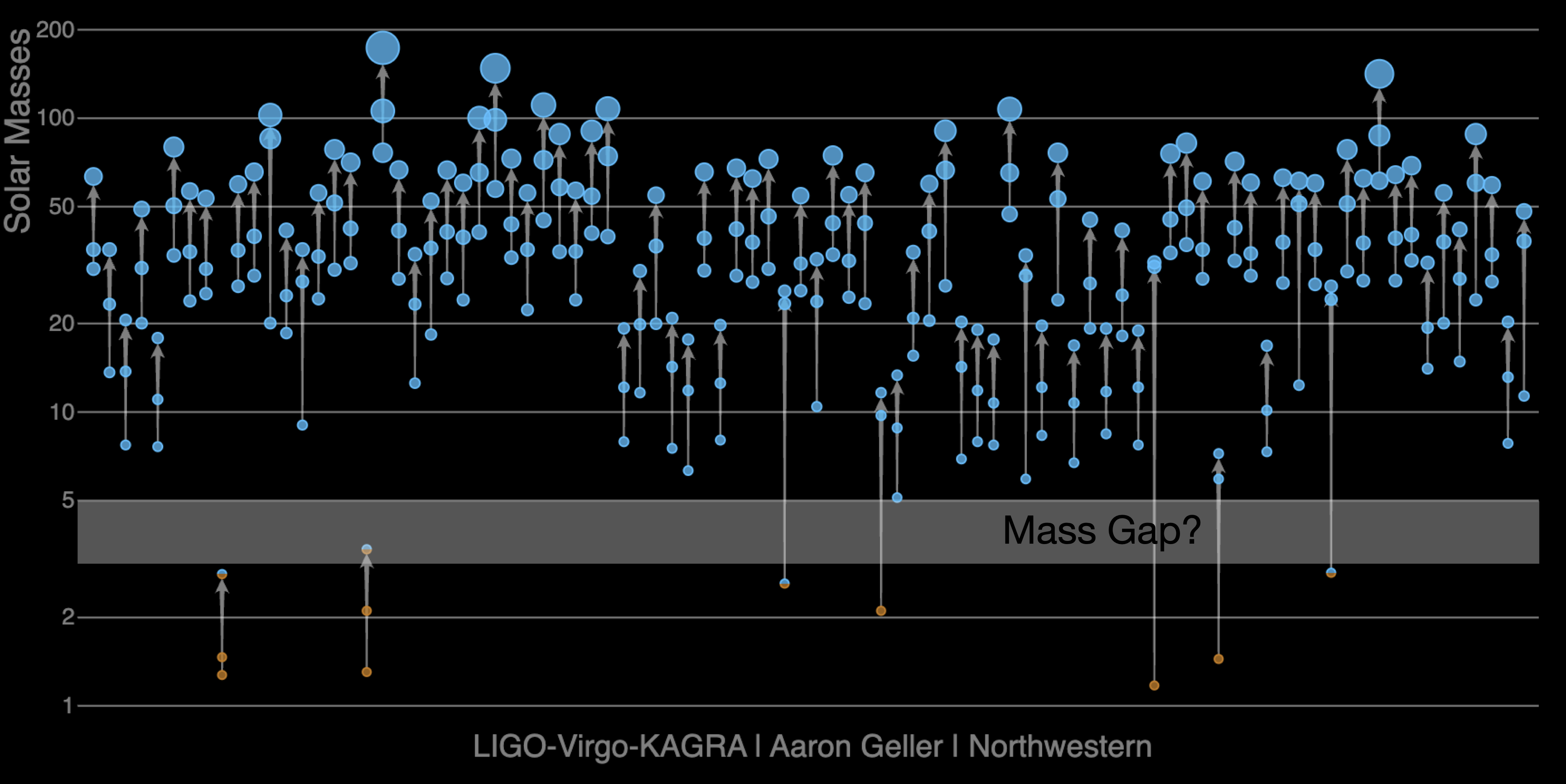
GW230529: A Black Hole In The Mass Gap
On May 29, 2023, gravitational waves were detected from a new type of system. I was fortunate to co-lead the discovery paper of this system on behalf of the almost 2,000 LIGO–Virgo–KAGRA collaboration scientists around the globe. The gravitational-wave event, dubbed GW230529 (“GW” for “gravitational wave” and its phone number “230529” for the year, month, and day of the detection), was seen only by the LIGO detector in Louisiana; all other detectors were either offline or not sensitive enough to see it.
Although we are confident that it is a real astrophysical event and not some source of noise, gravitational-wave detectors are somewhat like omnidirectional microphones. Without multiple detectors to triangulate the signal, we couldn’t determine where in the sky it came from. However, we can tell that the system was about 650 million lightyears away, meaning the gravitational waves were sent out a long, long time before even dinosaurs were around. We could also tell how massive the two objects in the system were, which was the real kicker.
Since the late 1990s, astronomers have hypothesized that there might be a “gap” between the heaviest neutron stars and the lightest black holes. Neutron stars can sustain themselves up to somewhere between two–three times the mass of the Sun before they can’t withstand the force of gravity anymore and collapse into a black hole (the exact “maximum mass” of a neutron star is a hot topic in astrophysics).
We’ve also indirectly inferred the masses of black holes in our own galaxy, the Milky Way, in systems called X-ray binaries. An X-ray binary is where a black hole is in a binary system with a star and stealing material from it. Based on how the star moves in the sky, we can tell the mass of the invisible black hole. It turns out that the lightest black holes observed in the Milky Way were no less than five times the mass of the Sun! Therefore, there seemed to be a gap in the masses of neutron stars and black holes that is between three–five times the mass of the Sun.
Is there a reason these lightweight black holes don’t form? Astronomers came up with theories about how the supernovae that form black holes can avoid this regime of masses. However, it is also possible that there is something we don’t quite understand about the biases of observing black holes in X-ray binary systems.
The black hole in GW230529 falls squarely in this “mass gap,” with a mass that is likely three–four times the mass of the Sun. This gravitational-wave event is one of the best pieces of evidence that lightweight black holes can exist in nature. The black hole in the system is also in the running for being the lightest black hole ever observed!
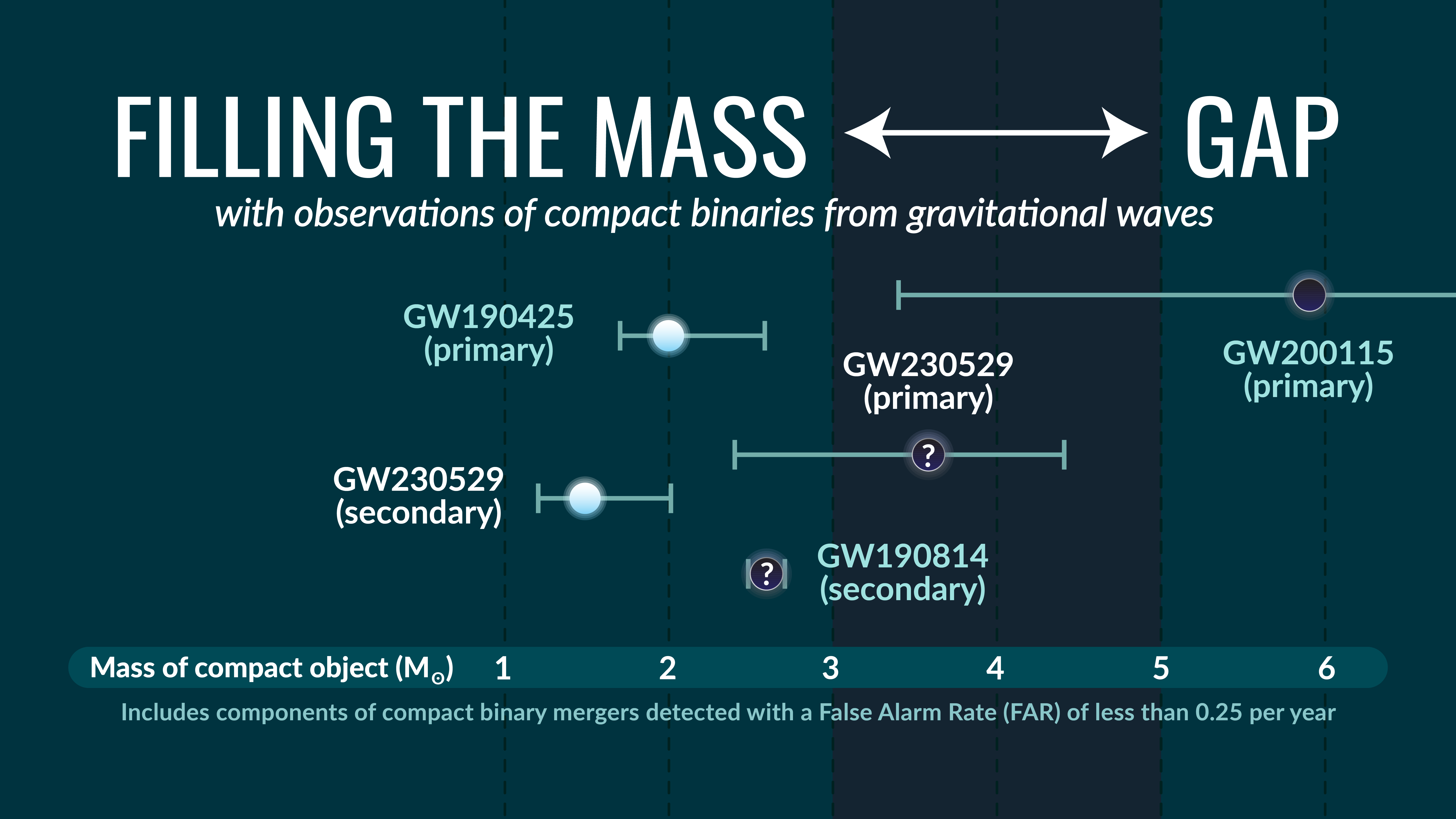
Despite how much mass they contain, black holes are amazingly small for their weight. At a few times more massive than the Sun, the black hole we observed could fit comfortably within the city of Chicago! This is wild, considering that we can see the way it distorts spacetime at a distance of 650 million lightyears—about four billion trillion miles.
The lighter object in the system was likely a neutron star. When neutron stars merge with another compact object like a black hole or another neutron star, they can get ripped apart and create a kilonova. However, if a neutron star merges with a black hole that is too heavy, it will get swallowed whole by the black hole before it can get torn to shreds, without emitting light or synthesizing heavy elements. Although we did not observe a kilonova alongside GW230529 (we couldn’t tell where in the sky it came from, which makes it exceedingly difficult to find an electromagnetic counterpart), the small black hole in the GW230529 system also tells us that black holes can indeed tear apart neutron stars before swallowing them whole.
More exciting gravitational-wave discoveries are on the horizon. Until then, keep looking up!




